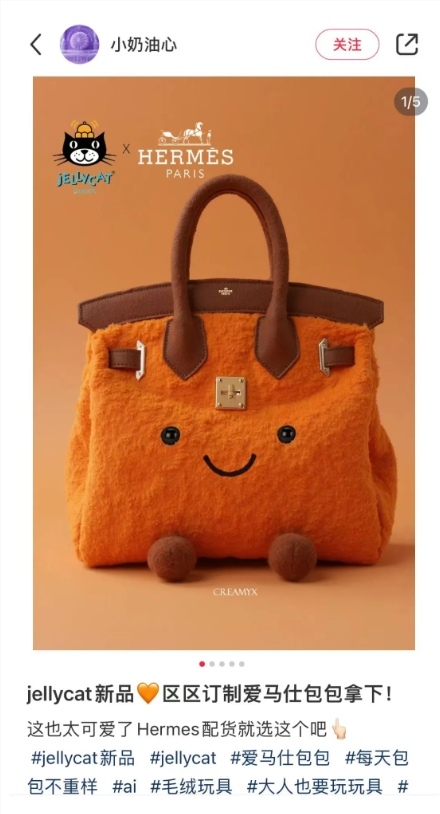Recently, Xiaohongshu blogger Xiao Guangyuanxin used AI technology to generate pictures of Jellycat and Hermès and other luxury brands' co-branded dolls, which went viral on social media and sparked heated discussions among netizens. These creative AI works perfectly integrate soft and cute Jellycat dolls with classic luxury bags, attracting a lot of attention and triggering discussions about the application of AI in the field of creative design and brand licensing. The editor of Downcodes will take you to understand this incident in depth.
An unexpected joint dream has sparked heated discussions on social media. Recently, Xiaohongshu blogger Xiao Guangxinxin successfully created a sweet oolong on social platforms with a set of AI-generated pictures of Jellycat and Hermès co-branded dolls, which received nearly 10,000 likes.
In this set of pictures, the classic Hermès bag shape perfectly combines the iconic plush texture and signature smile of the Jellycat doll, which has attracted many netizens. However, when the truth emerged that these heart-warming dolls were actually the work of AI, netizens’ reactions were particularly interesting. This may be the only Hermès bag I can afford, but it turns out to be fake? One comment expressed the feelings of many netizens.


This blogger’s creativity goes beyond that. She also used AI to create a cross-border doll between Jellycat and Dior’s winter Snow White Princess Diana bag, as well as a customized version of a Louis Vuitton small bag-shaped doll. Each piece perfectly interprets the unique collision of luxury goods and cute dolls.
The popularity of this virtual joint brand has also attracted the attention of the real market. According to the blogger, some merchants have expressed their intention to produce products physically. However, to transform these AI ideas into physical objects, you will inevitably face the challenge of copyright issues such as brand licensing.
This phenomenon reflects the unique preference of contemporary consumers for cute luxury goods, and also demonstrates the potential of AI technology in the field of creative design. However, the leap from creativity to commercialization still requires careful consideration of the dual constraints of law and market.
AI technology brings unlimited possibilities to creative design, but it also brings challenges in copyright and commercialization. Little Cream Heart’s AI co-branded doll incident undoubtedly provides us with material for thinking, and also indicates the direction of future changes in the creative industry. We look forward to the emergence of more ideas based on AI technology, and we also need to pay attention to its legal compliance to promote the healthy development of the industry.